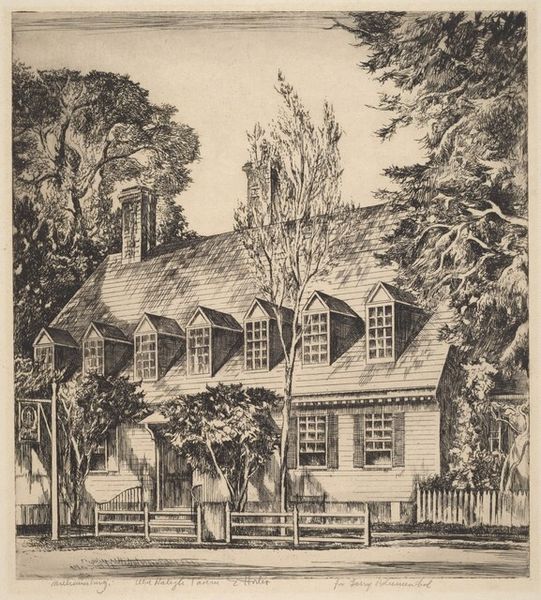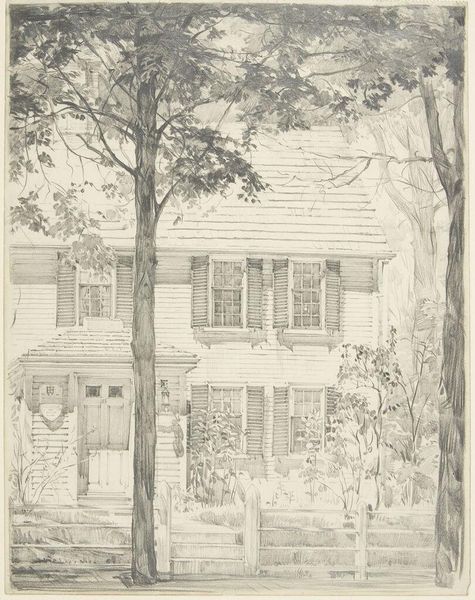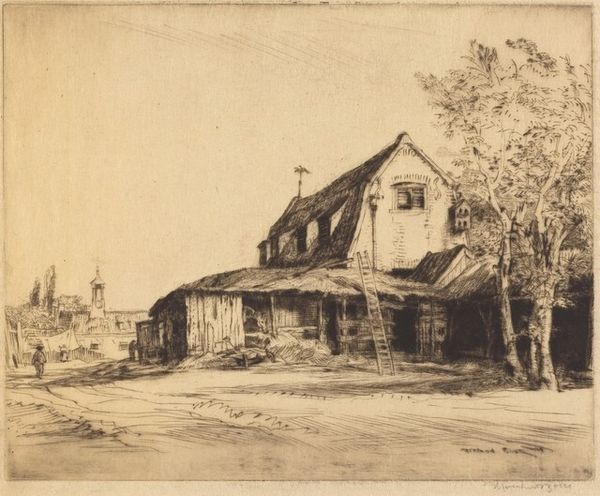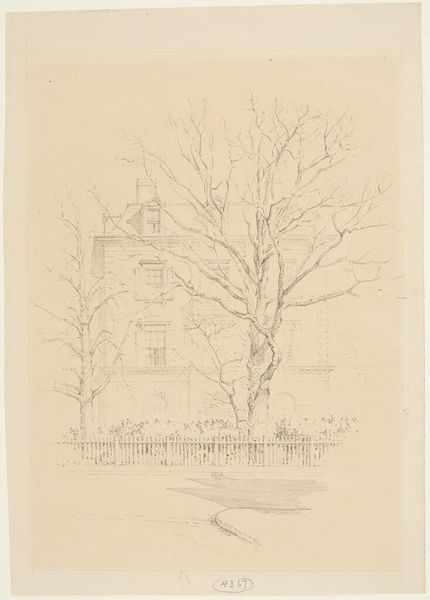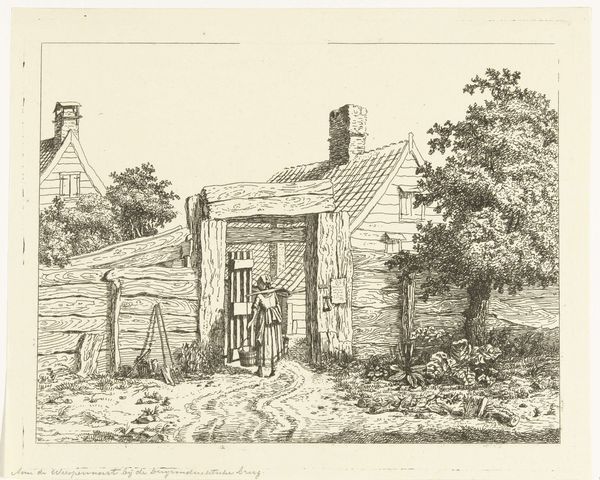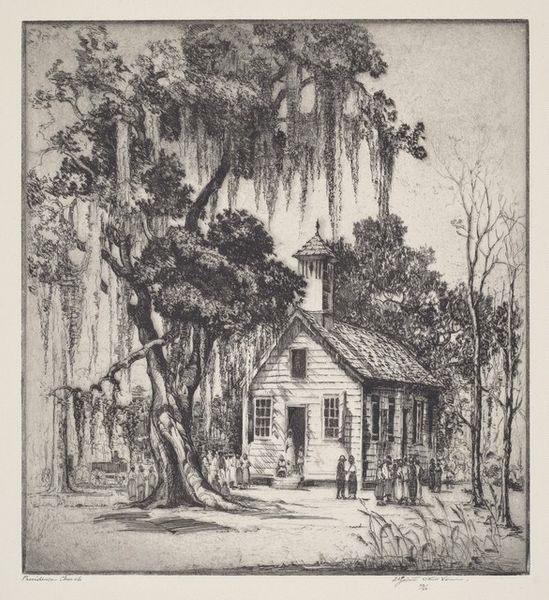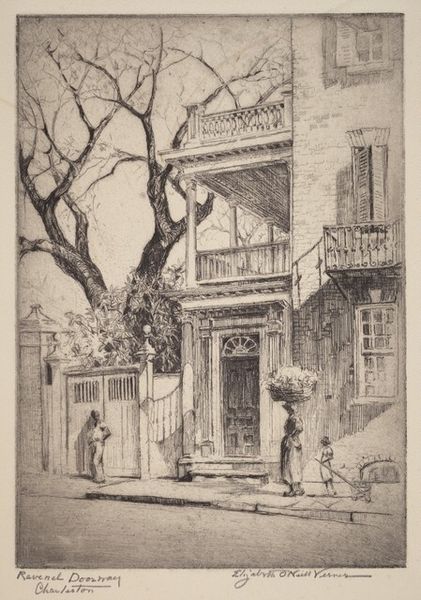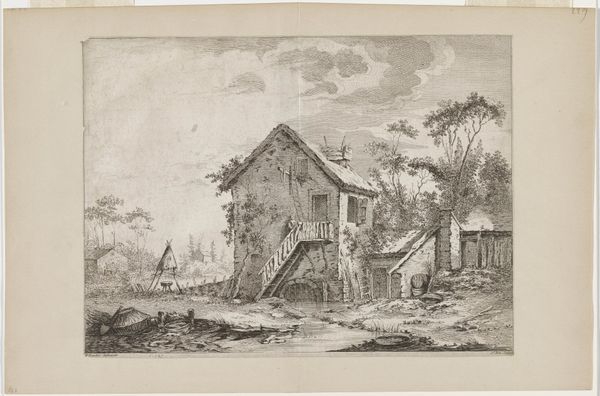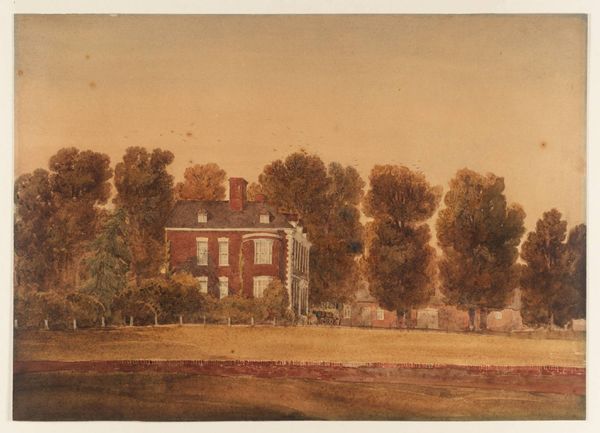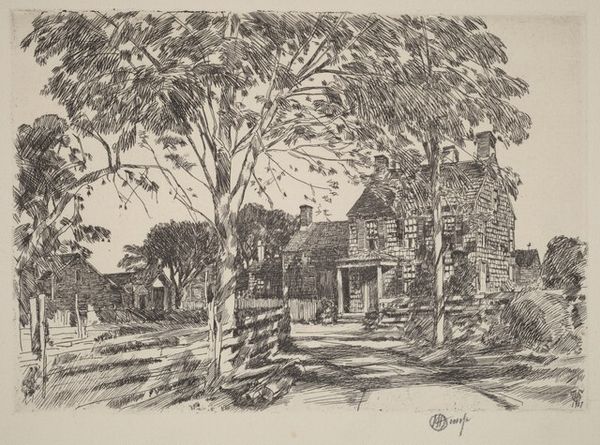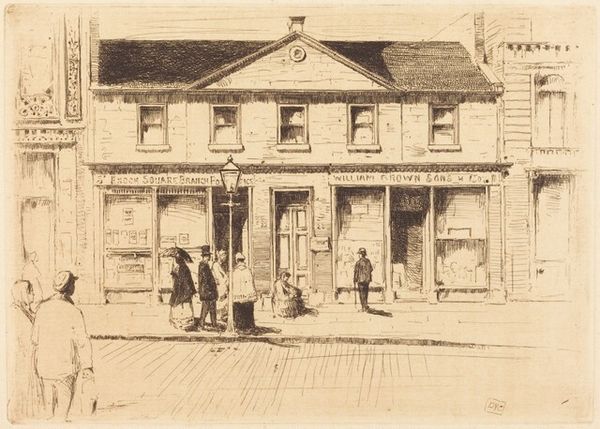
drawing, print, etching, architecture
#
drawing
# print
#
etching
#
landscape
#
cityscape
#
architecture
#
realism
Copyright: National Gallery of Art: CC0 1.0
Curator: Earl Horter’s etching titled "Williamsburg, Ludwell-Paradise House" presents a rather captivating architectural study. Editor: My first impression is of a slightly melancholic stillness, isn’t it? The intricate details almost feel weighed down, particularly with the heavy shading. There's a sense of the past looming large, and the high contrast reinforces the importance of looking more deeply at the details in the composition. Curator: Precisely! The artwork highlights the Ludwell-Paradise House, and it offers us insights into the cultural history and socio-political context of the residence and potentially even of the people connected with the building. Consider the architecture itself; the symmetrical façade embodies classical ideals while existing in a space shaped by the politics of colonialism and enslavement. Editor: That’s an interesting juxtaposition. Thinking about this space as part of Williamsburg history and present reality, I consider if the very structure represents certain power dynamics that can't be divorced from the present discussion, then this etching almost immortalizes a past we still contend with. Even the artist’s choice to render the image in grayscale seems to me to strip away the vibrance, perhaps to confront us more starkly with its implications. Curator: A potent reading. Now, think about the absence of human figures. It’s interesting. Perhaps this invites contemplation on power and absence. The manicured trees soften the severity, don’t you think? The artist has clearly paid meticulous attention to them, maybe suggesting nature and time exist beyond our controlling gaze? Editor: That reading resonates! The trees disrupt the stark geometric perfection of the building, possibly signifying nature’s reclamation or resistance to structural limitations of a colonial, built world. Earl Horter's perspective compels us to ask not only “what is depicted?” but, importantly, “whose narrative is being told, and whose is obscured?". Curator: And that critical perspective is something the art world deeply needs! This image stands as a striking meditation on memory, history, and power. It prompts us to see buildings, places, and etched works not merely as records but also as active participants in shaping our understanding of ourselves and our world. Editor: Absolutely, it feels essential to think of art like this when trying to unravel all of its significance!
Comments
No comments
Be the first to comment and join the conversation on the ultimate creative platform.
